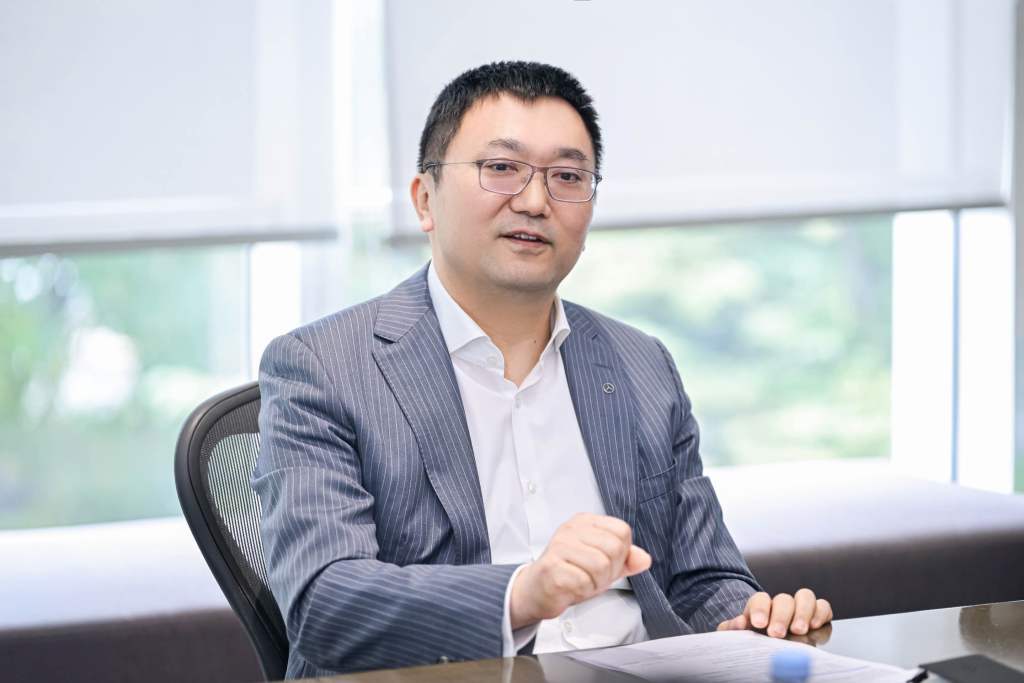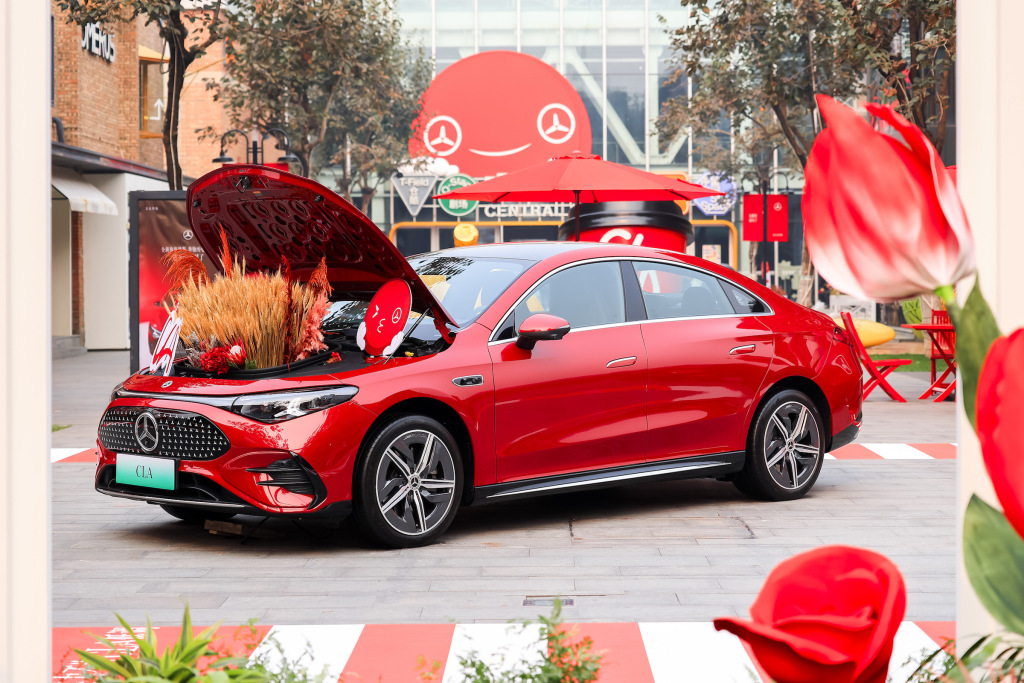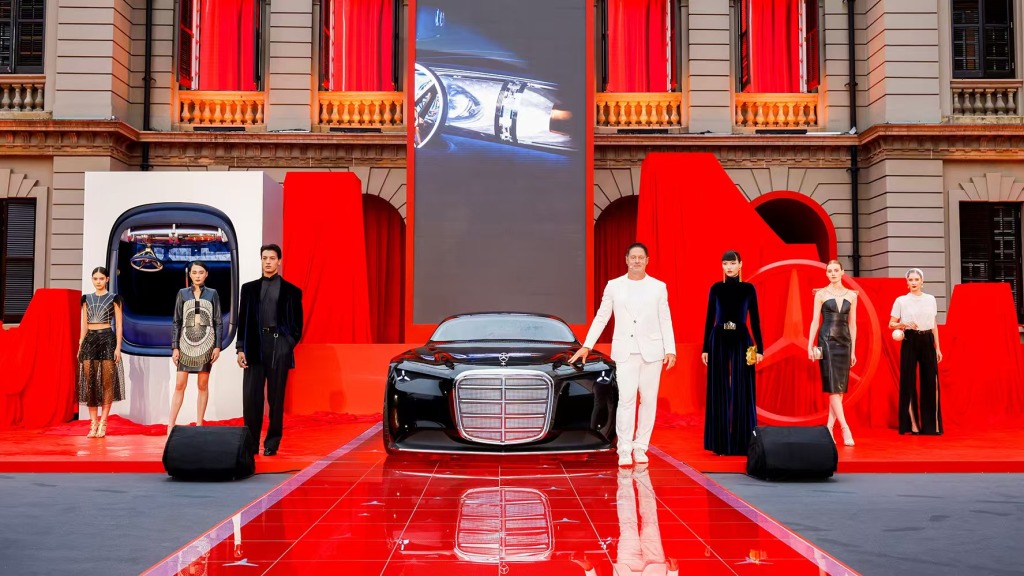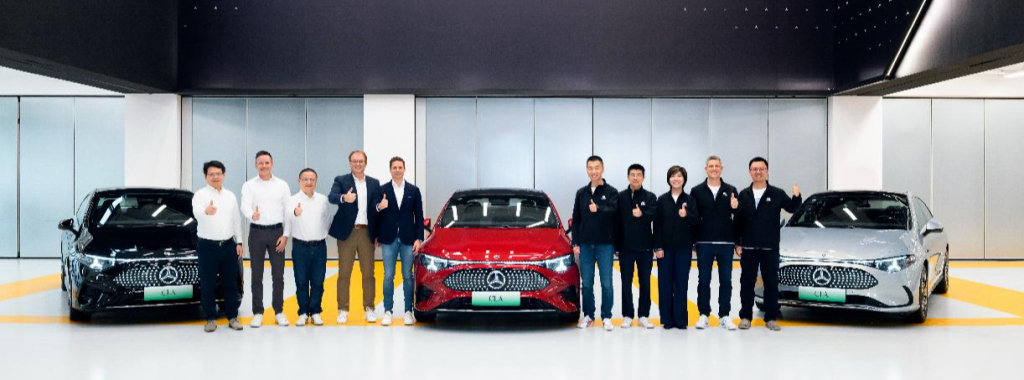
In 2025, China's new energy vehicle market officially entered the deep waters of competition for existing market share. According to data from the China Passenger Car Association, the penetration rate of new energy vehicles exceeded 62% in the first three quarters. Intelligent cockpits, advanced intelligent driving, and ultra-long range have become core factors in users' decision-making, while safety anxieties and brand premium controversies continue to shake up the market landscape.
Amidst the rapid iterations of emerging players seizing the high ground in public opinion and the collective pressure on traditional luxury brands, Mercedes-Benz has chosen the all-new Mercedes-Benz CLA as its anchor point to launch a comprehensive transformation covering technology, brand, and channels.

What mission does this model, regarded by the industry as a new starting point for Mercedes-Benz's electrification strategy, actually carry? Zhang Yan, Senior Executive Vice President of Beijing Mercedes-Benz Sales Service Co., Ltd. and Chairman of the Mercedes-Benz Star Wish Foundation Management Committee, gave an exclusive interview to The Paper on the eve of the listing, discussing the transformation logic of the century-old luxury brand.
The bottom line consensus for luxury electric vehicles is "safety".
In the face of frequent safety incidents involving new energy vehicles, "how to rebuild user trust" has become a common challenge for the entire industry. As the brand that first proposed the concept of automotive safety, Mercedes-Benz's answer lies in a series of rigorous data. "Safety under new technological conditions has always been a key focus of our discussions."
Zhang Yan got straight to the point: "We have always been committed to bringing customers a product experience that is 'very Mercedes whether it is electric or gasoline,' and the most important thing in this is the uniformity of safety standards."
This commitment stems from Mercedes-Benz's 139 years of experience in car manufacturing—pioneering real-vehicle safety crash tests in 1959 and working with various organizations to achieve the vision of "zero fatal traffic accidents" by 2050, making safety a principle engraved in the brand's DNA.
Mercedes-Benz has invested significant resources in the all-new all-electric CLA. It underwent 150 real-world crash tests globally, with an additional 30 localized adaptation tests conducted in China, accumulating nearly 5 million kilometers of real-world road durability testing, including 1.1 million kilometers in the Chinese market alone.
"From material selection to testing standards, we have not lowered any requirements because of electrification," Zhang Yan emphasized. The new car comes standard with 11 airbags and a full set of safety prevention systems, building a basic protection network for drivers and passengers.
In the area of battery safety, which is of utmost concern to users, Mercedes-Benz has set targets that far exceed national standards. The thermal stability of the power battery meets the new national standard for 2026 ahead of schedule, achieves millisecond-level high-voltage power cut-off and voltage return to zero within 2 seconds after a collision, and does not catch fire within 24 hours after thermal runaway of a single cell, far exceeding the industry benchmark of "power cut-off in 5 seconds and no fire in 5 minutes".
Regarding electromagnetic radiation, the new car's electromagnetic interference resistance standard is four times the industry standard, alleviating concerns for sensitive groups such as those with pacemakers. Even for the hidden door handles, Mercedes-Benz invested 25 million yuan in research and testing to ensure they automatically pop out after a collision and can withstand forced opening by external force.
For Mercedes-Benz, safety is not a standard, but a bottom line.
Intelligent localization under the "Mercedes-Benz standard"
If safety is the foundation, then intelligent technology is the key for Mercedes-Benz to break away from the traditional stereotype of luxury. The all-new all-electric CLA's city and highway cruise control system is a core achievement of its collaboration with Momenta.
Zhang Yan made it clear that this was not a simple case of adopting existing technology. Although "the collaboration with Momenta is a powerful alliance, we have always adhered to the 'Mercedes-Benz standard'," he explained. "We adopted their end-to-end technology approach, but from the vehicle's electrical architecture to the driving experience, we redefined everything according to Mercedes-Benz's logic, ultimately realizing the concept of 'human-machine co-driving'."
This system is developed based on the highest functional safety level ASIL-D, achieving aerospace-grade safety standards. Even more noteworthy is its localization adaptability. "Each city's roads have their own 'grammar.' For example, in Suzhou, the green light for bus lanes is given 5 seconds in advance, and in Beijing, some left-turn lanes are located on the far right. These details require real-world testing to optimize the algorithm."

Zhang Yan revealed that Mercedes-Benz adheres to the strategy of "testing in one city and driving in one city." The system was first launched in Shanghai and Suzhou, and will be gradually expanded to more cities in the future. "We want to ensure that the assisted driving will not cause accidents or violations due to differences in traffic rules. This is Mercedes-Benz's basic requirement for intelligent technology."
In addition to intelligent driving, the new MB.OS architecture achieves software and hardware decoupling, and the Mercedes-Benz virtual assistant jointly developed with ByteDance's Doubao big model and iFlytek makes the car-machine interaction more in line with the habits of Chinese users.
Mercedes-Benz's intelligent transformation is not about showing off technology, but rather about always focusing on user experience, retaining the rigor of a luxury brand while incorporating the flexibility of local technology.
Energy efficiency is a hard currency
In a market where range and energy consumption are core pain points for users, the all-new all-electric CLA delivers an impressive performance: 866km range under CLTC conditions, ultra-low energy consumption of 10.9kWh per 100km (media tests even show a lower consumption of 10.1kWh), and in the Beijing-Shanghai Expressway range challenge, it completed over 1200km in heavy rain with only one charge midway through the journey. In the high-speed ring extreme test, its full-charge range reached 1071km. These figures are not theoretical values from a laboratory, but rather proof of its performance in real-world scenarios.
This advantage stems from the core technologies Mercedes-Benz inherited from the VISION EQXX concept car. The 800-volt electrical architecture, silicon carbide inverter, electric two-speed transmission, multi-source heat pump system, and silicon oxide negative electrode battery together form a class-leading energy efficiency benchmark.
In the era of electrification, energy efficiency is more important than simply driving range. Low energy consumption not only means fewer charging cycles, but also extends battery life and reduces long-term operating costs for users.
The strategic significance of this car transcends the product itself. "It is a new starting point for Mercedes-Benz in terms of intelligent technology, electrification, and vehicle manufacturing," Zhang Yan emphasized. With the launch of the CLA, Mercedes-Benz plans to launch seven China-exclusive models by 2027. "Using this as a fulcrum, we will fully adapt to the development of the new era and the needs of our customers."
Embrace new customer groups
To reach a wider audience with this "new beginning," Mercedes-Benz launched an unprecedented marketing revolution. From the carnival-style launch event to the crossover collaboration with McDonald's, to inviting stand-up comedian Lu Han to participate and having brand ambassador Wang Chuqin launch a limited-edition champion model, Mercedes-Benz's marketing language has become increasingly youthful and vibrant. Even the main visual elements of the campaign have shifted from the previous somber tones to a lively red.
"We've been thinking about how to adapt to current market demands and customer changes while maintaining Mercedes-Benz's traditional character," Zhang Yan explained. "Red embodies the pure heart of traditional Chinese culture, echoes the auspicious meaning of great ambition, and conveys the brand's determination to transform."
The adjustments to the distribution channels were equally sweeping. Mercedes-Benz conducted immersive experience training for more than 1,700 frontline dealer employees, breaking down company and job level boundaries, allowing sales managers, general managers and sales consultants to participate in real road tests in Shanghai and Suzhou, and even adding a nighttime experience session to feel the nighttime atmosphere of the 142 dynamic stars.
"Only by ensuring that our employees truly understand the advanced features of our products can we better communicate them to our customers," Zhang Yan said.
At the same time, Mercedes-Benz is steadily optimizing its distribution channels. Starting last year, the brand proactively shifted its focus from expanding the scale of its dealer network to improving quality and efficiency. This was achieved by closing redundant and inefficient outlets and strengthening digital channel development, creating a service experience that combines readily available online and convenient in-store services.
"The newly established Digital and Communications department this year allows us to connect with customers more directly and understand their needs," Zhang Yan revealed. In the future, Mercedes-Benz will also add new retail outlets in key business districts to make the user experience more convenient.
Perseverance in the cold winter
In an era of increasingly fierce industry competition where companies are emphasizing survival, Mercedes-Benz remains committed to its philanthropic endeavors, a dedication that makes the brand more human. "Practicing corporate social responsibility is ingrained in the DNA of our brand and dealer partners; we will continue to invest regardless of the environment," said Zhang Yan.
Through the Mercedes-Benz Star Wish Foundation, the brand has built a public welfare system covering multiple fields such as environmental protection, cultural heritage, road safety co-construction, and youth education.
This year marks the 15th anniversary of the Mercedes-Benz Star Wish Foundation. Mercedes-Benz not only invited Wang Chuqin to become a public welfare partner to expand the influence of public welfare, but also demonstrated responsibility and speed in major disaster relief.
Following the earthquake in Shigatse earlier this year, local dealer Tibet Star delivered the first batch of relief supplies to the disaster area within 12 hours. This spontaneous action demonstrated to the outside world that philanthropy is not a solo act by the manufacturer, but a shared pursuit of the entire Mercedes-Benz system.
In the field of sustainable development, the Mercedes-Benz Star Foundation recently announced a three-year partnership with the Sanjiangyuan National Park, becoming the only international company to achieve full philanthropic coverage of the first five national parks. In terms of cultural heritage, the "Under the Nine Layers: Archaeological Achievements of the Former Site of the Imperial Workshops of the Forbidden City" exhibition, a collaboration with the Palace Museum, has officially opened, witnessing five years of archaeological work and contributing to the inheritance of traditional culture.
Zhang Yan remarked, "Archaeology makes inheritance more meaningful, and Mercedes-Benz's century-old technological heritage has also been given new meaning by the times."
With its series of preparations and marketing changes surrounding the all-new all-electric CLA, Mercedes-Benz aims to demonstrate to the world that it not only adheres to Mercedes standards but also adapts to the times. "Our brand remains young and shining; choosing Mercedes-Benz is the right choice, both in the past and in the future."
Finally, Zhang Yan reiterated the strategic significance of the all-new all-electric CLA – it is not only a new starting point for Mercedes-Benz's electrification and intelligentization, but also a fulcrum to support us in embracing the new era and new customer groups.
From inventing the automobile 139 years ago to redefining luxury today with electrification, Mercedes-Benz's transformation has always been about finding a balance between breaking new ground and upholding tradition.
It's easy to see that, regardless of the era of hybrid vehicles, the belief that "Mercedes is Mercedes, and Mercedes is still Mercedes" has always been engraved in the hearts of every Mercedes employee.


